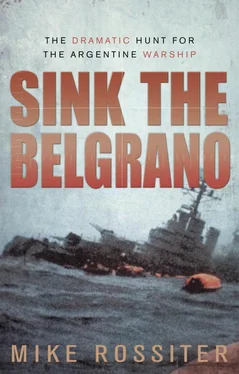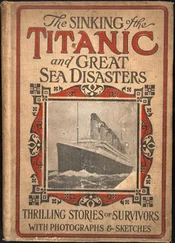Mike Rossiter February 2007
Prologue
A LITTLE LOCAL DIFFICULTY
EARLY IN THE morning of 29 March 1982, the British Prime Minister Margaret Thatcher was at Northolt Aerodrome, an old wartime RAF base now used for government and VIP flights, located a few miles west of London. With Lord Carrington, the Foreign Secretary, she was on her way to a meeting in Brussels. Before boarding the RAF VC10, she had time to talk to the Foreign Secretary about some troubling events taking place thousands of miles away in the South Atlantic. A group of Argentine workmen – it was unclear exactly who they were – had landed on the island of South Georgia, which was a British possession administered from the Falkland Islands a further seven hundred miles to the west. The workmen, it appeared, had flouted the authority of the British representative on the island and had raised the Argentine flag over their encampment. It looked likely that efforts to remove them would antagonize the Argentine junta – the military government that had seized power in 1976 – and there were worries that the incident might escalate into a serious international dispute. Margaret Thatcher wanted to beef up Britain’s military presence in the area, and asked her office in Downing Street to contact the Secretary of State for Defence, John Nott, about sending a nuclear submarine to the region. That decision taken, she then boarded the aircraft for Brussels. She had no idea that in three days’ time what was happening in the South Atlantic would present her with the biggest crisis of her life.
Once ensconced in her seat, the Prime Minister thought only of the meeting to come and the escalating costs of the Common Agricultural Policy. She was in the middle of a series of bitter negotiations with the leaders of France and Germany about the future structure of the European Community, and specifically about the enormous sums of money that were being paid by Britain to support inefficient European agriculture. This was just one of the many problems vital to British interests that had beset her government since its election in 1979. Everywhere members of her Cabinet looked, they faced serious, seemingly intractable difficulties.
As far as the economy was concerned, the prospect for 1982 was dismal. Elected to power in 1979 on the slogan ‘Labour Isn’t Working’, Thatcher’s government had done little to curb the sense of decline. The number of people unemployed had reached three million; interest rates were hovering around 16 per cent; in the previous year there had been a prolonged strike in the nationalized steel industry and now there was the threat of one by the country’s coalminers.
In 1981 serious rioting had erupted in the streets of cities throughout Britain, the biggest and most prolonged having been in the Toxteth area of Liverpool and in Southall and Brixton in London; most commentators were forecasting another violent summer to come in inner-city Britain. The conflict in Northern Ireland had assumed a horrifying new dimension, with ten detained IRA members dying while on hunger strike, to further their claim for prisoner of war status.
Looking abroad, the landscape appeared equally threatening. War had started between Iraq and Iran, disrupting oil supplies and causing increasing instability in the Middle East. In the Cold War – the global conflict between the United States, its European allies and the Soviet Union – the West had suffered a series of significant reverses during Margaret Thatcher’s short period in office. The most obvious and dramatic had been the Soviet invasion of Afghanistan in 1979, when a whole army had marched in and taken over the country. The Soviet Union had also succeeded in establishing port facilities in Angola and Mozambique, and Russian aircraft were conducting long-range reconnaissance flights over the Atlantic and the Indian Ocean.
There was very little that Britain could do about the war in the Gulf, but the creeping Soviet expansion throughout the world, accompanied by a Soviet navy that was getting bigger and rapidly modernizing, was of deep concern. Britain had a nuclear deterrent of Polaris missiles carried on nuclear submarines that needed to be modernized. The preferred solution was to replace them with new, larger submarines carrying Trident missiles purchased from the United States. John Nott, the Defence Secretary, was in the middle of negotiations with other European governments about the acceptability of this, as well as desperately trying to find the money in the defence budget to pay for the new submarines, missiles and warheads. With all these concerns, both domestic and international, hinging on Britain’s role as a major economy, a nuclear power, a member of NATO and Europe, and the United States’ closest ally, it was understandable that events on a far-off, wind-blasted island seemed a mere irritating distraction.
On that chilly Monday morning John Nott had seen the same information as Margaret Thatcher, and also thought that nuclear submarines should be sent south, purely as a precaution. At that time Britain had only seven nuclear-powered fleet or hunter-killer submarines in service. They were heavily worked. Not only did they protect the missile-carrying Polaris submarines, but they also worked in collaboration with the United States navy conducting intelligence missions and trailing any Soviet submarine that attempted to enter the eastern Atlantic. In 1982 the US and British submarine patrols were facing a crisis. The Russians had recently launched a new class of nuclear submarines, which seemed to be much quieter and harder to detect than their predecessors. The West was losing its advantage in anti-submarine warfare. Increased intelligence patrols and new tactics were now being called for.
In order to comply with the Prime Minister’s request, the navy decided that a British nuclear submarine currently at sea working with the surface fleet on exercises off Gibraltar might be spared to go to the South Atlantic. HMS Spartan was duly instructed to break off from the exercises and head south, but the Ministry of Defence (MoD) felt that perhaps others should also be prepared to go.
There was no love lost between John Nott and senior officers of the Royal Navy, who thought that if money needed to be found to modernize the nuclear deterrent it should come from the Exchequer, not out of the navy’s budget; they were only too aware of how stretched their resources were in trying to meet not only the requirements of their own political masters but also the demands of their US allies.
Vice Admiral Peter Herbert, who was in charge of all Britain’s nuclear submarines, can be forgiven for feeling that these new orders were unreasonable. ‘With twelve scrap-iron merchants creating a stir in South Georgia it is difficult to believe that it is necessary to disrupt Spartan ’s exercises and send her to the South Atlantic,’ he wrote.
Sending Spartan was bad enough, in his eyes, but where were the others to come from? HMS Splendid had been sent on an urgent mission to find a Soviet submarine; once she had discovered it perhaps that contact and the responsibility for it could be passed over to a US submarine, and Splendid might then become part of the effort to deter any aggression from Argentina. As for any others, what choice was there? HMS Conqueror was tied up at the wall in Faslane, not currently tasked for anything. Yes, that looked like a solution: Conqueror – she could go.
THE FIRST HINT that HMS Conqueror was to gain worldwide notoriety was met with absolute disbelief. On the rainy, cold evening of 30 March 1982, Conqueror was tied up at the quayside in Faslane, on the eastern side of the Gare Loch in Scotland, home to the 3rd Submarine Squadron, part of Britain’s fleet of nuclear submarines. She had just returned from exercises with the US navy at the Atlantic Undersea Test and Evaluation Center off Andros Island in the Bahamas, and most of the crew had already gone on leave for the Easter holiday. Commander David Hall, the chief engineer, was the senior officer remaining on the submarine. Conqueror was scheduled for her five-week-long Assisted Maintenance Period, when the submarine’s engineers would work with the shore-based engineering staff to carry out a far-reaching programme of repairs and inspections. Uppermost on David Hall’s mind were the problems of mobilizing the equipment and spares necessary for the required work on the submarine’s nuclear reactor, turbines, pumps and gearboxes. It was these times in port when the submariners of the ‘Silent Service’ were reminded most forcefully that they were merely the sharp end of a large and inflexible bureaucracy, of far more importance than a mere warship.
Читать дальше












